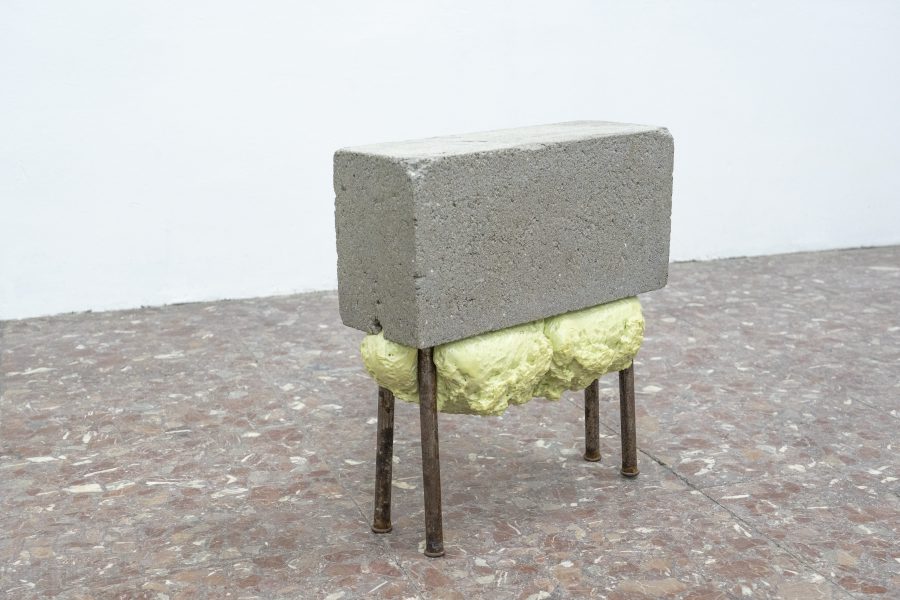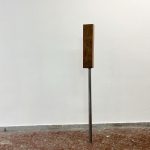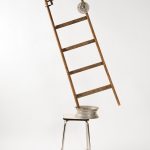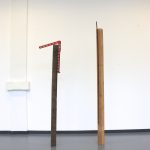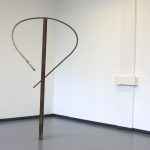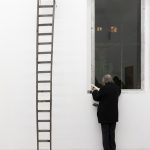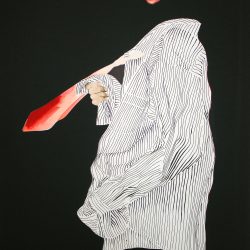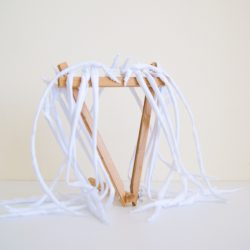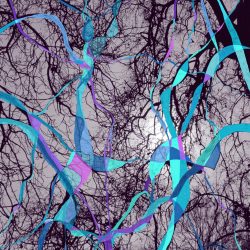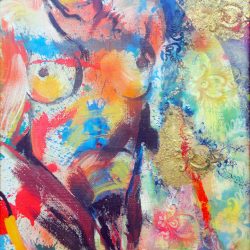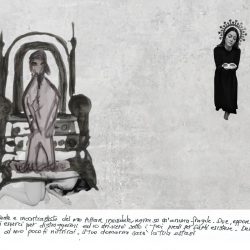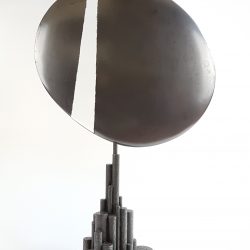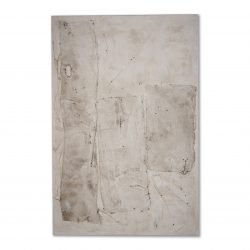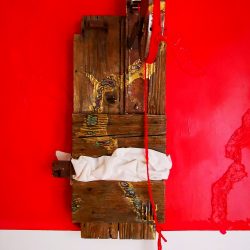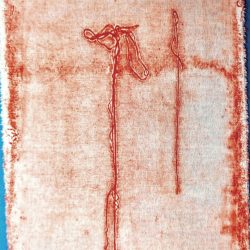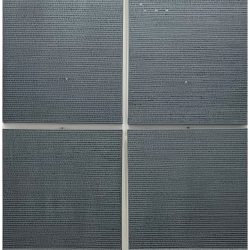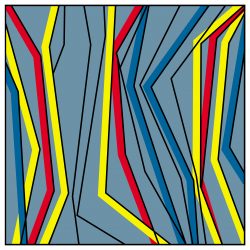work
antieroi
| category | Installation |
| subject | Political / Social, Nude, Erothism, Beauty, Abstract |
| tags | antieroe, antieroi, fabrice bernasconi borzi |
| base | 20 cm |
| height | 220 cm |
| depth | 20 cm |
| year | 2022 |
Antihero 2015 - ongoing
I am not trying to be the first, or the best, or the most spectacular, it even seems to show a sort of mediocrity. As a result, any attempt to give me a place in art history would only seem difficult to sustain, as my work, in some respects, effectively resists its own evolution. My anti-heroes are characteristic in this sense. They are a set of objects arranged in a sculptural way, in complex ways, often without anything remarkable, as unstable as they are discreet and useless. These sculptures are archived through photography, but photography itself is not the art object. Antiheroes is the title of the series, but each composition has its own title. In fact, their titles range from extravagant history to pinchless allegory, from neologism to lack of title, to the inexplicable. No composition has the slightest relationship with another in the series, I'm so disparate that I can't produce a coherent whole. Of such a casual, lax and unserious nature, it has an immediately deflationary effect on any analysis of art history. The anti-hero series would rather be a parody of traditional sculpture and the language with which we decipher it. Composition, subject, material, dynamism, weight: all these terminologies clash with the mediocrity of the materials and the title that strikes a sublime ridicule. If you read carefully, aesthetic references come to mind. The recurring theme of gravity becomes evident: the fraction of a second of a precarious balance before objects collapse.
I often manipulate a material directly without using any tools. In these cases, gravity becomes as important as space. Focusing on matter and gravity as a medium gives rise to unintended forms and gives materials an ephemeral form. Since these sculptures are decidedly vertical, the internal dynamics guarantee their dependence on the ground or a wall. Moreover, the very simple principle of their verticality is the weight of lead and its clear reaction to gravity, which attracts it downwards: because it is in this attraction that resistance operates, which is the supporting principle. A stability achieved through conflict and balance of forces.
These objects, which lend themselves to a minimum of mechanical functioning, are based on fantasies and representations that can be provoked by the execution of unconscious acts. Acts of realization from which the resulting pleasure can hardly be explained. In all the cases analyzed, his acts correspond to fantasies and desires clearly defined as carnal. But the balance is particularly difficult when it comes to things and objects, because they are riotous, imperturbable, idiotic. The objects are there, impassive. The word says it all by itself: the amorphous and frozen object, at first sight contrary to being changed, moved, to abandon its bliss: moving it from its original and artistic context requires strength and calculation.
I am not trying to be the first, or the best, or the most spectacular, it even seems to show a sort of mediocrity. As a result, any attempt to give me a place in art history would only seem difficult to sustain, as my work, in some respects, effectively resists its own evolution. My anti-heroes are characteristic in this sense. They are a set of objects arranged in a sculptural way, in complex ways, often without anything remarkable, as unstable as they are discreet and useless. These sculptures are archived through photography, but photography itself is not the art object. Antiheroes is the title of the series, but each composition has its own title. In fact, their titles range from extravagant history to pinchless allegory, from neologism to lack of title, to the inexplicable. No composition has the slightest relationship with another in the series, I'm so disparate that I can't produce a coherent whole. Of such a casual, lax and unserious nature, it has an immediately deflationary effect on any analysis of art history. The anti-hero series would rather be a parody of traditional sculpture and the language with which we decipher it. Composition, subject, material, dynamism, weight: all these terminologies clash with the mediocrity of the materials and the title that strikes a sublime ridicule. If you read carefully, aesthetic references come to mind. The recurring theme of gravity becomes evident: the fraction of a second of a precarious balance before objects collapse.
I often manipulate a material directly without using any tools. In these cases, gravity becomes as important as space. Focusing on matter and gravity as a medium gives rise to unintended forms and gives materials an ephemeral form. Since these sculptures are decidedly vertical, the internal dynamics guarantee their dependence on the ground or a wall. Moreover, the very simple principle of their verticality is the weight of lead and its clear reaction to gravity, which attracts it downwards: because it is in this attraction that resistance operates, which is the supporting principle. A stability achieved through conflict and balance of forces.
These objects, which lend themselves to a minimum of mechanical functioning, are based on fantasies and representations that can be provoked by the execution of unconscious acts. Acts of realization from which the resulting pleasure can hardly be explained. In all the cases analyzed, his acts correspond to fantasies and desires clearly defined as carnal. But the balance is particularly difficult when it comes to things and objects, because they are riotous, imperturbable, idiotic. The objects are there, impassive. The word says it all by itself: the amorphous and frozen object, at first sight contrary to being changed, moved, to abandon its bliss: moving it from its original and artistic context requires strength and calculation.



